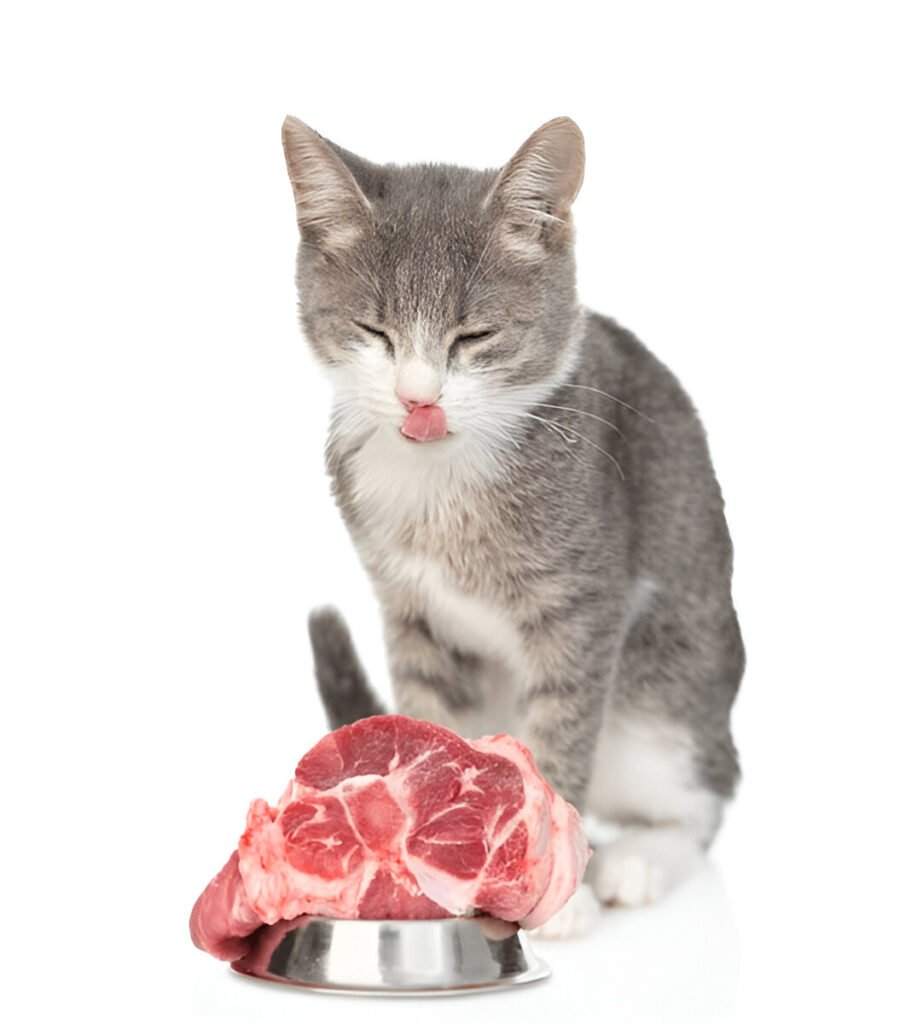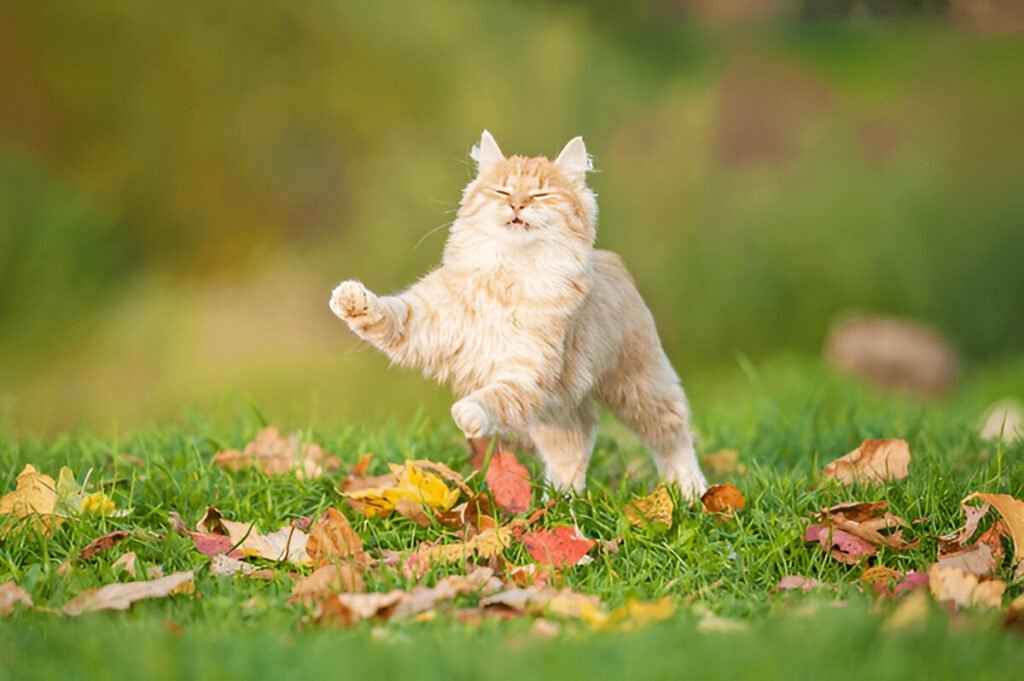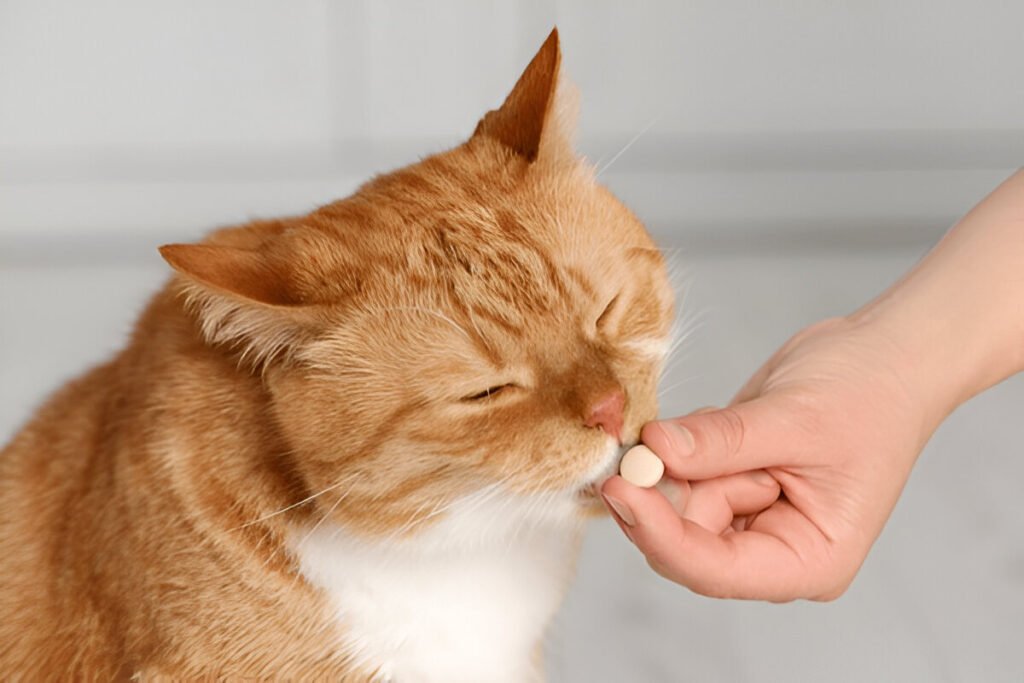It may sound shocking, but feeding a cat a raw food diet has become common among pet owners who want to give their cats a natural diet as they are naturally inclined. Founded on the premise that cats should eat unprocessed foods as their ancestors in the wild would, this system is widely regarded as healthy for the cat. However, knowing its benefits, weaknesses, and challenges is crucial when deciding what is best for your pet.
This guide explores every possible detail about how raw cat food differs from fresh cat food, including its advantages, preparation, risks involved, and nutritional implications.

Table of Contents
What is Raw Cat Food?
Raw cat food, in this case, is an eating regime made of uncooked and natural foods fit for the use of cats. It usually includes a combination of:
Fish, poultry (chicken, beef, mutton, or turkey), or any muscle meat.
Liver, kidneys, and heart of animals.
Bones (soft, raw for calcium).
Supplements – the other foods may produce a nutritional shortfall if poorly balanced.
This diet is intended to mimic the cat’s natural diet, which results in a high-protein, low-carbohydrate diet for the cat.
The Benefits of Feeding Raw Cat Food
Cats fed on raw meals have some benefits for their mother; these include their coat, skin health, and body well-being.
1. Matches Clever Rates of Cats
The most important meals to feed your cat are from the animal protein group because cats are obligate carnivores. Their forefathers lived by hunting small animals like rats and choking them raw. According to their biological clocks, a raw diet mimics this eating paradigm.
2. Improved Skin and Coat Health
Raw diets contain omega-3 and omega-6 fatty acids, giving dogs better skin and coat. Kittens with a lifeless coat or skin problems like itching or scaly skin usually improve if fed on a raw diet.
3. Better Digestive Health
Many human foods marketed for cats include filler or grain products that are difficult to break down. Free from these additives, raw food results in tiny, ammonia-smelling stools and fewer digestion problems.
4. Dental Hygiene
Chewing raw bones is very beneficial as it can scrap off plaque and tarter on its own, thus making teeth and gums healthier. This could do away with dental diseases that are prevalent in most domestic cats due to the consumption of dry diets.
5. Increased Energy and Vitality
Cats fed on a raw diet tend to show higher energy levels. This is probably due to the unprocessed nutrients that power up their systems better than processed foods.

Potential Risks and Challenges
However, certain issues are associated with raw feeding, which are small drawbacks compared to the sensational benefits. Knowing of possible hazards in the future means that your cat will not be harmed and will stay fit.
1. Potential of bacterial contamination:
Undercooked meat contains bacteria like Salmonella, E. coli, and Listeria. Thus, even though cats can produce strong stomach acids to fight these bacteria, they jeopardize the health of individuals who handle foods, including cats.
2. Nutritional Imbalance
Cooking for the cat means thoroughly understanding its feeding needs since raw food will be given. If the deficiencies occur, the common nutrients lacking in the packaged water are taurine, calcium, or vitamin E.
3. Cost and Time Commitment
Acquiring good quality meat and initiating meals is somewhat costly and consumptive of time. The owners must spend time guaranteeing that the diet is fresh, balanced, and, most importantly, sanitary.
4. Unsuitable for Certain Cats
However, it must be stated that not all cats are suitable for feeding them on a raw diet. Bacterial infections are more likely to be contracted in kittens and elderly cats or those with a weakened immune system, while the digestive systems of such cats may have problems with the process of raw foods.
Essential Components of a Balanced Raw Diet
To provide your cat with complete nutrition, you’ll need to include these components carefully:
1. Protein (Muscle Meat)
Protein is the main structural component of a cat’s muscles and tissues in the body. Raw meaty bones of muscles, including chicken breast, beef, turkey, etc, should make up most of a raw diet.
2. Organ Meats
On the same account, organs like the liver and kidney are good sources of vitamins and minerals. The liver is particularly important because it contains vitamin A, vital in the human body, especially for sight and the immune system.
3. Raw Bones
Raw bones give calcium and phosphorus, making bones and teeth strong. This should be done with chicken neck or wings will do. Do not feed your dog cooked bones because they are so hard that they may easily snap and lead to complications such as injury.
4. Supplements
Unfortunately, even the best raw diets may need some supplementation to meet the pet’s needs. These may include Taurine for the cardiovascular and ocular systems, fish oil for those omega-3 fatty acids, and vitamins E and D to help support immune systems.

How to Safely Prepare Raw Cat Food
Raw cat foods can be quite dangerous for both the cat and the cat’s owner while preparing the food. Follow these steps to minimize risks:
1. High quality raw materials
But you should buy fresh, human-grade meat from reputable markets or butchers because it will make preparation easier. Choose organic or grass-fed products where possible to get the best quality for your meat items.
2. Practice Hygiene
Before and after preparing meat, clean your hands, utensils, and any surface. Meats should be stored at recommended temperatures to minimize bacterial development and growth at temperatures less than 40°F.
3. Use a Trusted Recipe
Always consult a vet to develop a diet plan to ensure that the cat foods you feed your cat are healthy. Do not estimate quantities or omit important parts of a project.
4. Proper Storage
Freeze meals in their portion sizes to prevent spoiling when you take a large amount of food. Do not let them get to room temperature to thaw, as this increases the chances of bacterial production.
Commercial Raw Cat Food Options
If your confidence in preparing raw meals at home is low, you can use many well-famed brands that sell ready-made raw cat food in packets. These options make things convenient and way less worrisome than the other options. Popular brands include:
Primal Pet Foods: This provides fully raw frozen and freeze-dried meals with organic ingredients.
Stella & Chewy’s: Popular and provides complete and balanced raw diets.
Instinct Raw: Offers raw patties and bites in a range of options to be conveniently fed.
Transitioning Your Cat to a Raw Diet
Cats are always loyal to the food they eat, so changing their food choice needs time. A sudden change may upset their stomachs, so follow these steps for a smooth transition:
Step 1: Mix Gradually
First, it is advised that they mix small proportions of raw food with their diet, setting an initial ratio at 10 percent. Gradually switch from the old food and, over a period of 10-14 days, enhance the proportion of raw food.
Step 2: Monitor Closely
Champion changes in bowel movements, appetite, and energy level. Some problems may occur, so slow the transition process down.
Step 3: Be Patient
Another issue to note about cats is that they take their time to change their texture and taste buds. They will be able to adapt soon enough if more consistent and encouraging action is applied.
Conclusion
To feed your cat to its natural ability, it is a good practice to feed it raw cat food. As we have already seen, diets have many advantages: the coat is healthier, and so is digestion, but there is much more planning, safety measures, and principles of balanced nutrition.
Whatever you cook for your cat or buy from the market, raw cat food might unlock the key to your cat’s healthy, happy life. Use great passion and the maximum dedication while dealing with this diet for your pet, and let him or her turn into the happiest, healthiest, and most energetic cat in the world!
FAQs
1. Is raw cat food good for all cats?
However, most healthy adult cats can be given raw food. Nonetheless, they recommend that kittens, senior cats, and cats with medical conditions seek the veterinarian’s approval before switching to a raw food diet.
2. Can cats get food poisoning when they consume raw food?
Cats’ gastrointestinal tracts are open to bacteria, but contamination threats persist, particularly in humans. To minimize your risk of ingesting contaminated material, exclude contaminated food from your diet plan.
3. How much raw food should you give your cat?
Feed 2-3% of the cat’s body weight daily in two meals. Split portions according to activity level and appropriate weight-reduction goals.
4. Is it necessary to feed my cat supplements when feeding raw cat foods?
Well, supplements like taurine, fish oil, or vitamins are still required, which contribute to a balanced diet.
5. Is it possible to transition my cat’s raw food diet instantly?
No, because changing the diet all of a sudden may cause an upset stomach, while the other type of change may take some time for your cat to adjust.

